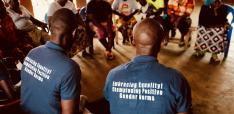Book Review - How to Rig an Election

 How to Rig an Election, by Nic Cheeseman and Brian Klaas. Yale University Press.
How to Rig an Election, by Nic Cheeseman and Brian Klaas. Yale University Press.
A lot of the power of a successful book is in its ‘big idea’ – the overall frame that endures long after the detailed arguments have faded in the memory. On that basis, ‘How to Rig an Election’ looks set to do very well indeed.
The authors are both top political scientists (Cheeseman at Birmingham and Klaas at LSE) but also good writers – the prose is crisp and wonderfully free of political science gibberish jargon – who know the value of a great anecdote (no shortage of those on a subject like this).
The starting point is a paradox ‘there are more elections than ever before, and yet the world is becoming less democratic’. The basis for these claims includes interviews with more than 500 elite figures in 11 countries, backed up by a global data set of all elections held since 1960. Their focus is on goldilocks states – neither pure authoritarian, nor ‘pure democratic’ (if such places exist), but lying on a spectrum from dominant authoritarian (Russia, Rwanda) to competitive authoritarian (Kenya, Ukraine), which together they call ‘counterfeit democracies’ masquerading as the real thing. Before you reach for your decolonisation shotgun, they also include lots of examples from the chequered pasts and presents of countries like the US (Trump) or UK (rotten boroughs).
What they find is that rigging elections is a really good strategy for autocrats – much better than simply doing an Idi Amin and trying to kill everyone who opposes you. Rigging elections ‘typically enables embattled governments to secure access to valuable economic resources like foreign aid, while reinvigorating the ruling party and – in many cases – dividing the opposition…. 30 years ago, the main aim of the average dictator was to avoid holding elections; today it is to avoid losing them.’
Perhaps the most useful aspect of the book is their identification of a six stage ‘menu of manipulation’: Gerrymandering; vote buying; repression; hacking the election; stuffing the ballot box and finally, playing the international community. A really handy checklist for future observers, whether international or armchair. Each gets a chapter, stuffed with examples.
Here’s how it works:

Gerrymandering made simple
‘By gerrymandering electoral boundaries and excluding rival leaders who threaten to gain momentum, incumbents can give themselves a significant head start before the campaign has even begun. This advantage can then be consolidated by manipulating state access to resources to distribute patronage and gifts, outspending opposition parties. At the same time, incumbents may digitally manipulate the media and electoral process.
When these tactics prove to be insufficient, counterfeit democrats have two riskier options: political violence to intimidate opponents or, if that doesn’t work, the last resort for the recalcitrant authoritarian is ballot-box stuffing.
And while counterfeit democrats are busy rigging the election, they are also often running a parallel deception campaign internationally [to] dupe observers or foreign governments into endorsing a rigged election.’
Which leaders go in for election rigging?
‘Leaders are most likely to try and stay in power when they believe that their presence is essential to maintain political stability; in cases when they are less committed to plural politics; when they have engaged in high-level corruption and/or human rights abuses; when they lack trust in rival leaders and political institutions; when they have been in power for a longer period of time; and when they control geostrategically important states with natural resources, effective security forces, weak institutions and high levels of distrust.’
The level of rigging seems to be much higher for presidents than for common and garden politicians: ‘in some African countries roughly 50% of legislators do not win re-election, even in countries where the president never loses’. Competitivity lower down the food chain allows ruling parties to renew themselves, bring in new talent and get rid of the deadwood, while the Big Man stays on the presidential throne.
My overall conclusions from the book?
- Autocrats have to be really dumb to lose elections, given all the advantages of incumbency. ‘Authoritarians are adaptable’ and getting better at rigging, including doing a lot more of it well ahead of election day.
- This makes fixing it really hard – there’s a balloon effect whereby if you manage to clamp down on one of the six rigging mechanisms (eg by using tech to monitor polling stations), governments can simply shift to one of the others.
- And it’s getting harder – the rise of both China and Donald Trump is making any interest in procedural democracy look rather old fashioned and irrelevant.
Depressing stuff, the authors do their best to end on a positive, but their ‘what is to be done?’ chapter is unfortunately the least convincing of the book. As one depressed election observer in Zimbabwe told Cheeseman ‘we are always fighting the last election, but the regime is always looking ahead to the next.’ The authors end on a rhetorical note:
‘Autocrats have learned that it is easier to stay in power by rigging elections than by not holding them at all. Right now, those that rig elections are not only outfoxing their own people, but also international observers. Unless we learn to identify these strategies and deter or address them, then election quality will continue to decline. If we care about democracy, we must act now.’
True that, and this book is a great start. We have the diagnosis, and next we need more ideas on who can fix it, and how.
This post first appeared on:
Image credit: Dave & Margie Hill / Kleerup via Flickr (CC BY-SA 2.0)




